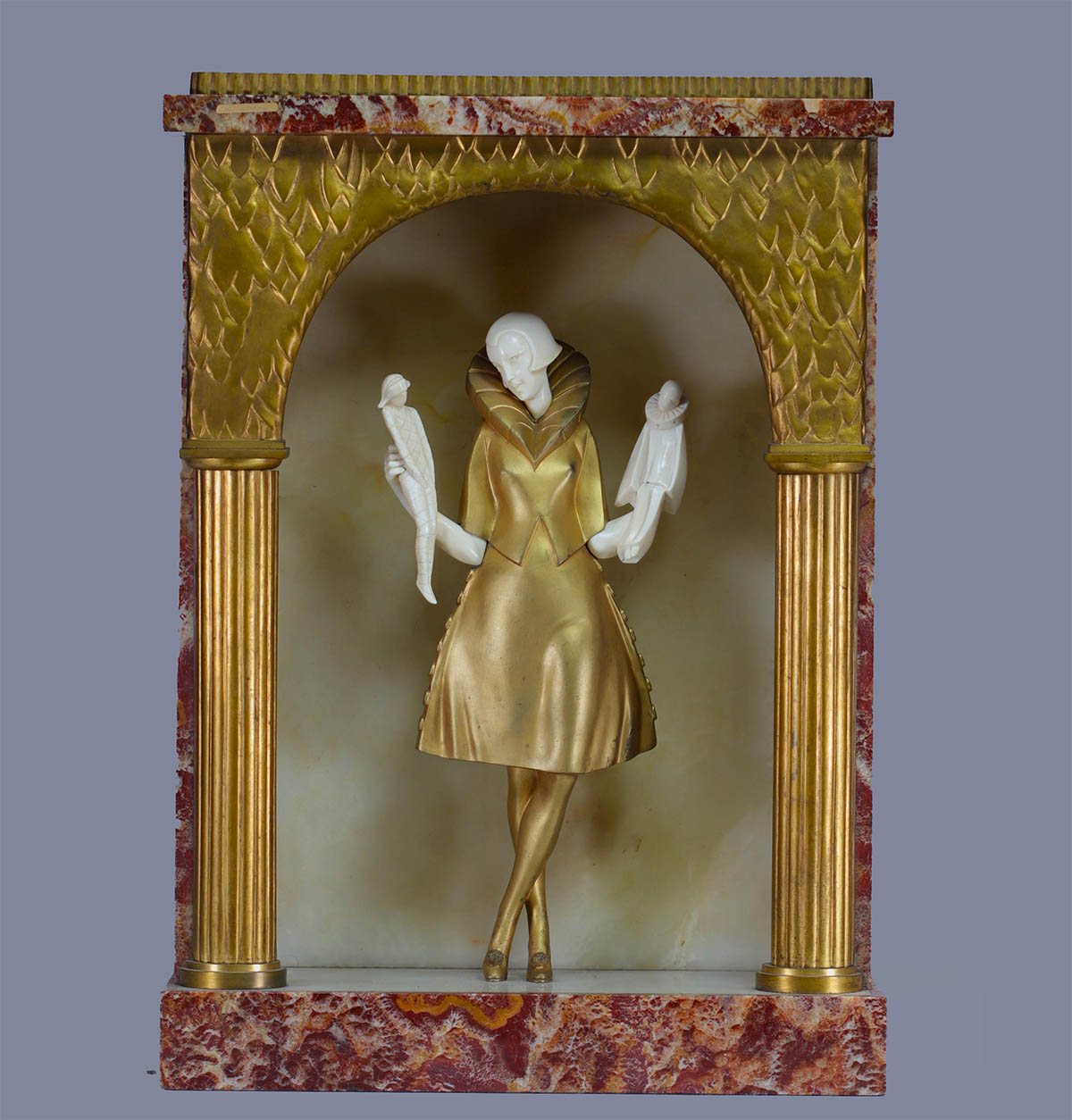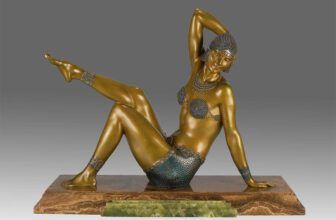
Pierre Le Faguays’s Famous Art Deco Sculptures
The Art Deco era, with its clean lines, stylized forms, and dynamic energy, captured the spirit of modernity in the early 20th century. Amid the masters of this movement, one name stands out with distinction, Pierre Le Faguays. His sculptures, elegant and poised, encapsulated movement like few others could. They weren’t just forms; they were frozen ballets, athletic performances cast in bronze, or whispers of emotion locked into graceful limbs. In this story, we delve into the life and legacy of one of the great Art Deco sculptors of the 20th century, exploring his most famous works, techniques, and lasting value.
A Parisian Prodigy
Pierre Le Faguays was born in 1892 in Resne, Brittany, France. He would go on to become one of the most prolific and celebrated sculptors of the Art Deco period. From a young age, Le Faguays demonstrated a remarkable talent for form and composition. He later studied at the École des Beaux-Arts in Geneva, where his passion for sculpture was refined and sharpened under the guidance of master sculptor James Vibert.
While still early in his career, Le Faguays aligned himself with the aesthetic ideals of Art Deco, a movement that was redefining the artistic and architectural world between the 1920s and 1930s. He quickly became recognized for his sculptures that emphasized motion, balance, and stylized beauty, often infused with athleticism or classical grace.
What is Pierre Le Faguays Known For?
Le Faguays is primarily known for his bronze and spelter figurative sculptures, often depicting female dancers, athletes, warriors, and mythological figures. His work is characterized by:
Dramatic, energetic poses
Streamlined, elegant lines typical of Art Deco
Attention to anatomy and movement
Use of bronze and occasionally ivory in chryselephantine pieces
Patinated and cold-painted finishes
He was especially gifted at conveying a sense of momentum and vitality. Where others depicted the human form at rest, Le Faguays caught it mid-leap, mid-spin, or mid-thought, creating visual poetry in metal.
Le Faguays also worked under pseudonyms such as Guenot and Fayral (used especially when working with the Le Verrier foundry), and collaborated closely with artists like Max Le Verrier and Marcel Bouraine, forming a dynamic trio of Art Deco sculptural visionaries.
How Did Pierre Le Faguays Make His Sculptures?
Pierre Le Faguays was a meticulous craftsman. His creative process involved several key stages:
Initial Sketches and Maquettes
He began with drawings and small clay or plaster models, known as maquettes, to explore posture and movement.Casting in Bronze or Spelter
Many of his finished pieces were cast in bronze using the lost-wax method (cire perdue), a process where the original sculpture is encased in a mold and melted away to be replaced with molten metal. Others were cast in spelter (a zinc-based alloy) for more affordable production.Finishing Techniques
Le Faguays used patinas, chemical treatments that color the metal, to highlight form and texture. Some sculptures were cold-painted, often by hand, to emphasize details like skin tones or clothing.Collaborations with Foundries
His works were often cast by renowned foundries such as Susse Frères, Max Le Verrier, and Etling Paris, ensuring consistency and excellence in execution.Chryselephantine Technique
In select works, especially those made for more affluent collectors, he used ivory for the flesh parts (such as faces and hands) and bronze for the body or garments, a style known as chryselephantine, echoing classical antiquity.
The result was always unmistakably Le Faguays: a sculpture that looked like it might breathe or leap off its pedestal.
Pierre Le Faguays’s Most Famous Art Deco Sculptures
While his catalogue is extensive, a few pieces stand out as iconic masterpieces of Art Deco sculpture:
1. “Danseuse au Cerceau” (Dancer with Hoop)
One of his most reproduced and admired works, this sculpture captures a lithe female figure gracefully balancing a hoop overhead. Her limbs stretch in a dynamic arc, echoing the Art Deco aesthetic of fluidity and motion.
2. “Victory” or “La Victoire”
Often interpreted as a symbol of triumph, this sculpture shows a winged female figure in mid-stride, arms outstretched. It’s a fusion of classical Greek influence and modernist verve, frequently mounted on marble or onyx bases.
3. “Athlète au Javelot” (Javelin Thrower)
A celebration of physical strength and agility, this sculpture shows a male figure caught mid-motion as he prepares to hurl a javelin. It exemplifies Le Faguays’s obsession with anatomical precision and dynamic stance.
4. “La Baigneuse” (The Bather)
A softer, more introspective piece, this nude figure embodies calm elegance. With a towel draped over her shoulder and a peaceful expression, she represents the feminine ideal of the Art Deco era.
5. “Diana the Huntress”
Le Faguays interpreted the Roman goddess of the hunt in various ways, sometimes with a bow, sometimes with a hunting dog. His versions are always powerful, athletic, and full of pride, capturing the strength and poise of womanhood.
Where Are Pierre Le Faguays’s Sculptures Located?
Le Faguays’s sculptures can be found in museums, private collections, and auction houses around the world. While he didn’t produce massive public monuments like some of his contemporaries, his works are widely collected and displayed.
Key Locations:
Musée d’Orsay, Paris – Some smaller bronzes and Art Deco artifacts feature in temporary or rotating collections.
The Metropolitan Museum of Art, New York – While not all his works are on display, he is represented in private collections associated with the museum.
Musée des Années Trente, Boulogne-Billancourt, France – This museum is dedicated to the 1930s and features several Art Deco pieces, including works by Le Faguays.
Victoria and Albert Museum, London – Occasionally features Art Deco exhibitions showcasing Le Faguays.
Private collections and galleries – Many of his sculptures are held in the collections of high-profile Art Deco collectors and antique dealers, especially in Paris, London, New York, and Brussels.
How Much Are Pierre Le Faguays’s Sculptures Worth?
The value of Pierre Le Faguays’s sculptures has steadily increased, especially as interest in Art Deco and early 20th-century decorative arts has surged.
Auction Prices
Smaller bronze or spelter figures: $3,000 to $10,000
Larger or rare signed bronzes with original patina: $15,000 to $50,000
Chryselephantine sculptures or highly detailed dancer figures: $60,000 to over $100,000, depending on provenance and condition.
A fully authenticated bronze with a strong signature and original base can command top-tier prices at Sotheby’s, Christie’s, and major European auction houses like Drouot or Bonhams.
Factors Influencing Price:
Signature and foundry stamp (especially “Le Faguays” or “Fayral”)
Original patina and base (marble or onyx bases are preferred)
Rarity and subject matter (dancers and athletes are in higher demand)
Condition and restoration history
Presence in exhibitions or catalogues raisonnés
Le Faguays’s Enduring Legacy
Pierre Le Faguays passed away in 1962, but his impact on 20th-century sculpture and Art Deco design has only grown with time. While other artists faded with the post-war rejection of decorative arts, Le Faguays’s work endured because it captured something timeless, the vitality of the human form, the grace of motion, and the quiet power of elegance.
Today, his sculptures are coveted not just by collectors but by interior designers, historians, and institutions. They grace penthouses in Paris, art-deco-inspired homes in Miami, and museums in Tokyo.
Le Faguays was more than a sculptor; he was a chronicler of a golden age. In every outstretched arm or poised foot, he told the story of an era that believed in beauty, strength, and optimism.
A Sculptor of Eternal Grace
Pierre Le Faguays’s work is a testament to a time when the world believed in progress, geometry, and the beauty of motion. His sculptures remain some of the finest expressions of the Art Deco period, sensual yet disciplined, dynamic yet serene. Whether rendered in bronze, spelter, or ivory, they possess a timeless allure.
In today’s fragmented art market, the lasting appeal of Le Faguays lies in his ability to blend classicism with modernism, capturing the soul of the Art Deco movement in physical form. His sculptures are more than objects; they are visual symphonies of balance, motion, and emotion.
So the next time you see a bronze dancer caught mid-twirl, or a hunter poised with spear in hand, look closer. It might just be a Le Faguays, and in it, the spirit of an age still dances. image/invaluable.com




